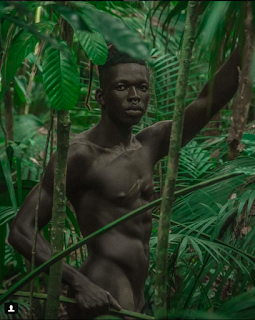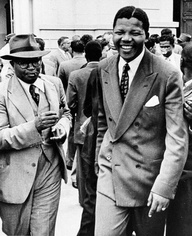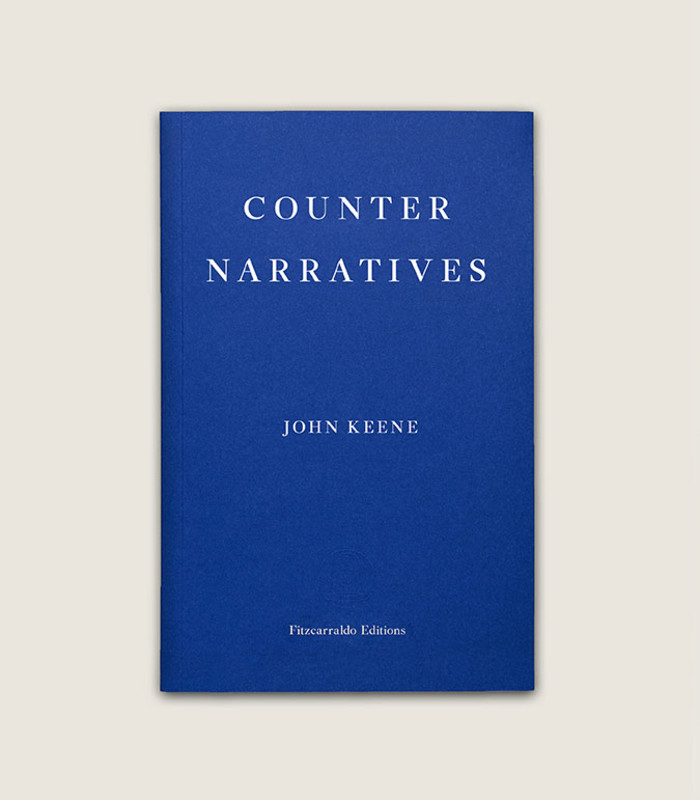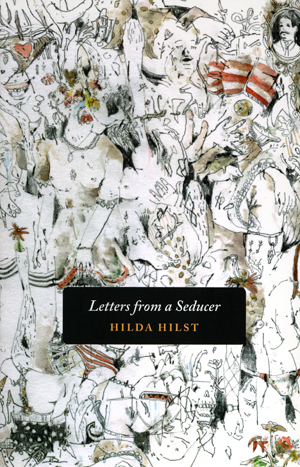 |
| Boris Akunin (© RIA Novosti. Ilia Pitalev) |
"[Writers are] engineers of the human soul."
I'd never read this quote before, and having done so today, hesitated to reprint it, despite its truth, mainly because of who uttered it and how he acted on its ramifications. I'm talking about
Joseph Stalin, the
Soviet dictator whose ruthlessness has no peers in the modern history of that country. The tally of Stalin's victims is vast beyond accounting, perhaps, but the names of writers he persecuted and murdered is less hazy to many, and any student of literary history could find parallels throughout the annals of literature. But I'm not posting about authoritarians' and totalitarians' persecution of writers so much as clumsily searching for a way to highlight an important event that took place the other day in in
Moscow: a peaceful march of opposition and resistance to the May 7, 2012 reelection of
Russian president
Vladimir Putin,
led by a dozen of Russia's most famous writers, which drew over 10,000 participants. Among the march's organizers were poet and conceptual art pioneer
Lev Rubinstein (1946-), journalist
Sergei Parkhomenko, and disability rights activist, economist and journalist
Irina Yasina (1964-), and other leaders included internationally renowned detective fictionist and translator
Boris Akunin (1956-) and poet, journalist, and essayist
Dmitrii Bykov (1967-).
The route proceeded from a statue of Russia's poetic icon,
Alexander Pushkin (1799-1837), exiled, as
New York Times reporter Ellen Barry notes, by Czar Alexander I, to one of
Alexander S. Griboyedov (1795-1829), whose ludic send-ups of the Czarist-era bluebloods were proscribed until after his death. At the park housing Griboyedov's bust, in the
Chistye Prudy neighborhood, anti-Putin activists have set up an Occupy-style encampment, which has so far not been attacked, though Putin has vowed to do so. Only a week before, a demonstration against Putin's reelection and inauguration near the Kremlin culminated in a brutal assault by the police forces, with 700 people arrested, some for allegedly doing nothing more than wearing white protest ribbons, and the state forces have remained on the prowl for any signs of antigovernment protest. Moreover, opposition figureheads
Alexei Navalny (1976-) and
Sergei Udaltsov (1977-) were jailed for 15 days on May 10, 2012, for "disobeying police orders" as they met with supporters in Moscow, and, according to the
Times, "Russia’s Parliament is considering a
draft law that would increase fines for causing unrest at demonstrations
to 1.5 million rubles, or about $50,000, and introduce a penalty of up
to 240 hours of compulsory labor."
As a result,
opposition activists decided to rethink their tactics, engaging in more artful "dilemma protests," such as flash gatherings, nonviolent resistance, ludic small-group activities, and site occupations, not unlike those of the Occupy Movements across the US and the rest of the globe. The organizers of this march
decided four days ago to see if the very act of walking together, on a "test stroll," without a permit, through Moscow's streets would provoke a police response involving "being blocked, beaten, poisoned with gas, detained, arrested or at least subjected to stupid molestation with questions." It did not, thankfully, and one point the phalanx of protesters, many clutching the books of the march's leaders, spanned over a mile. Afterwards, marchers got autograph and an opportunity to chat with the writers and each other, then dispersed. As of today, the Chistye Prudy encampment remains , but for how long it's hard to say. A much larger
March of Millions is planned for June 12, 2012 in Moscow. Perhaps writers across the globe should consider June 12 solidarity marches, on behalf not only of the Russian people, democracy, freedom of speech and protest, but against authoritarian and totalitarian forces, including corporate ones, worldwide.
+++
Today
Reggie H. sent along
Marie Arana's May 10, 2012
Washington Post review of an exciting new publication by
Graywolf Press, the first novel by late Mexican genius
Daniel Sada (1953-2011) to be translated into English,
Almost Never (2012, originally published as
Casi nunca by Anagrama in 2008). The translator is
Katherine Silver, co-director of the highly regarded
Banff International Literary Translation Centre (BILTC), which several translators I deeply admire have attended.
Rachel Nolan gave
Almost Never rhapsodized over the novel in the April 20, 2012
New York Times. Sada passed away late last year after many years of battle with kidney disease, but in his brief writing life he was not only prolific, but made his name as one of the more important and inventive prose writers not just in Mexico but in the Spanish language, winning numerous national literary prizes and the adulation of peers across the Hispanophone world. The late
Robert Bolaño (1953-2003) in particular sang Sada's praises many times, while Nolan, in her laudatory article, wrote this: "If you read only three novelists on Mexico — and you should read many more, but that’s your affair — choose Juan Rulfo, Roberto Bolaño and Daniel Sada." That is
very high praise, especially considering how many exceptional contemporary let alone past Mexican fiction writers there are.
As I replied to Reggie, I'd been told of Sada but it wasn't until I saw his email that I recalled two prior encounters with his name: one, a
2006 Bomb interview, conducted by Mexican novelist José Manuel Prieto and translated by one of the best contemporary translators of
Mexican poetry, poet and book artist
Jen Hofer, and
this 2011 epicedium, in The Paris Review, by author, journalist and critic
Francisco Goldman. In the Prieto interview, Sada ranges widely in discussing his work, describing his reasoning behind his use of Spanish prosody in writing verse-novels (about which I'll say more below), and what he learned from
Juan Rulfo (1917-1986) one of Mexico's canonical literary figures and the author of
Pedro Páramo (1955), with whom he took a writing class. Of his lessons from Rulfo, he says:
He once recommended that I shouldn’t persist in intellectualizing everything I was experiencing, because that would end up getting in the way of my perception. Reading is perpetual nourishment, never a vehicle for vanity. Intellectuals, in general, are braggarts, perhaps because they do not possess a true interior landscape. Artists are more silent; they are observers and have, naturally, a great capacity for astonishment. Artists are continual absorbers, and it is perhaps only much later that they pick and choose. These are all Rulfian concepts, and were spoken, I will confess, very close to my ear, as if they were secrets that can only be told in low tones.
Goldman talks about Sada's influence on and aid to Bolaño, who set many of his novels in Mexico, where he spent his adolescence, but which he never returned to after his move to
Spain in his early 20s, while also describing Sada's work and its significance, and their confabulations over the years. One of my favorite passages in Goldman's memoriam comes when he translates a reminiscence by Sada's friend and editor at
Tusquets Mexico:
He wasn’t interested in luxury or power, though his prose is a true luxury. Nobody could write the way he could. In life, he only ever boasted about one thing: his way of writing. To the students who took his writing workshops, he gave one of the simplest but most valuable pieces of advice: in literature there are no excuses. You have to organize your life to be able to write at least a half a page every day. After a week, you’ll have enough words to finish a story, after a month enough for a novella, after a year enough for a novel or a collection of stories … Some of his first novels were written under great economic duress, but they are among his best: Una de dos, Albedrío. t took him six years to write his most ambitious novel, amid personal upheaval and much moving around, but he never lost his energy or concentration …
 |
| Daniel Sada (Pascual Borzelli Iglesias © New York Times) |
About Sada's innovation: I cannot pretend to have read his work, but from what I can tell, he distinguished himself not just by overall narrative adroitness, tending towards the baroque (as with
Cuba's unsurpassable
José Lezama Lima (1910-1976)), but through his use of traditional Spanish prosody as the foundation for his
novels. As he told Prieto:
It is in no way a desire to be flashy or overly elaborate that leads me to use octosyllables, hendecasyllables, alexandrines, decasyllables or heptasyllables. I have a deep knowledge, from childhood, of the most elemental constructions of these metric forms, so characteristic of Spanish. In my primary school in Sacramento, Coahuila, Panchita Cabrera, a rural schoolteacher who was an ardent fan of the Spanish Golden Age (a type that no longer exists) taught us these phonetic techniques with one goal in mind: that we might fine-tune our ears in order to appreciate the expressive delicacy and virulence of our language. In fact, to be honest, it’s more difficult for me to write free prose, because I don’t have any technical (phonetic) resources on hand that might provide some support.
"Octosyllables, hedecasyllables, alexandrines..." I couldn't make that up. As a result it makes his work quite difficult to translate into English, which uses a very different stressed prosodic system. (Among American writers of the last 50 or so years, I immediately thought of
Vikram Seth (1959-), who wrote his astonishing novel
Golden Gate in "Onegin stanzas," as well as of
Anne Carson (1950-),
Peter Taylor (1917-1994), and
Thanhha Lai (1965-), each of whom wrote works of fiction in verse, but none in conventional meter or even blank verse.) On top of this, he apparently also was a master of puns and other forms of wordplay, as well as rhetorical devices and figures, and a good deal of this is lost--as it must be--in English. Rereading the Prieto interview, I thought of Spanish-language wordsmiths like
Guillermo Cabrera Infante (1929-2005) and
Julián Ríos (1941-) both of whom, however, also knew (and in Ríos's case, still does) English, and wrote Spanish prose, playful and elaborate, that could still be rendered into English. Cabrera Infante even possessed the remarkably rare capacity not just to write in English but to pun in it as well, and to write puns that could signify in many cases in both languages. But Sada's languages were all drawn from the registers of Mexico, and so Silver's labor, and that of subsequent translators, will require a golden-drummed ear. I'm eager to peek at Sada in the original, though I imagine my Spanish will be too rudimentary to grasp his richness, but I also want to read Silver's translation and compare it, to learn what she was able to successfully bring over, or, invent as needed.






































